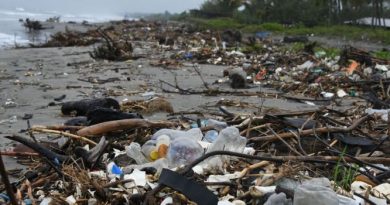World Bank, Govt Sign $250 M Pact for Dam Safety Program in India

The Indian government, the Central Water Commission, government representatives from 10 participating states and the World Bank have signed a $250 million project, to support India’s long-term dam safety program and improve the safety and performance of existing dams across various states of the country.
The Second Dam Rehabilitation and Improvement Project (DRIP-2) will build dam safety guidelines, bring in global experience, and introduce innovative technologies. This project will also introduce a risk-based approach to dam asset management that will help to effectively allocate financial resources towards priority dam safety needs.
The project will be implemented in approximately 120 dams across the states of Chhattisgarh, Gujarat, Kerala, Madhya Pradesh, Maharashtra, Manipur, Meghalaya, Odisha, Rajasthan, and Tamil Nadu, and at the national level through the Central Water Commission (CWC). Other states or agencies may be added to the project during project implementation.
The Department of Economic Affairs, Ministry of Finance, stated, “Dams provide critical infrastructure for power generation, flood moderation, and water supply for drinking, agriculture, and industrial use. Strengthening their structural safety and operational management will help in building better resilience to handle the effects of climate change. The Government of India has committed financial resources for a National Dam Safety Program including phased project support from development partners.”
The agreement was signed by Rajat Kumar Mishra, Additional Secretary, Department of Economic Affairs, Ministry of Finance on behalf of the Government of India; representatives from the state governments of Chhattisgarh, Gujarat, Kerala, Madhya Pradesh, Maharashtra, Manipur, Meghalaya, Odisha, Rajasthan, and Tamil Nadu; and Junaid Ahmad, Country Director, India on behalf of the World Bank.
“This is the world’s largest dam management program. Its objective is to break the costly cycle of ‘build-neglect-rebuild’ which characterizes the operations and maintenance of infrastructure across sectors,” said Junaid Ahmad, World Bank Country Director in India.
“The expected outcomes will be game-changing: sustaining the livelihoods and food security of millions of Indians who depend on irrigated agriculture and enabling farmers to shift out of pumping groundwater, thereby, reducing energy consumption and greenhouse gas emissions. This program can act as a lighthouse for other countries tackling the challenge of managing hydraulic infrastructure.”
India is home to over 5000 large dams with a storage capacity of more than 300 billion cubic meters. Rainfall, which occurs mainly in intense and unpredictable downpours within short monsoon seasons, is of high temporal and spatial variability and does not meet year-round irrigation and other water demands.
Considering this, storage of water in dams is essential for the country’s economic growth and for the millions of people who rely on their waters to sustain livelihoods. With average annual cost of floods in India estimated at US$7.4 billion, many dams are critical in mitigating floods. Their failure could pose serious risks to downstream communities.
World Bank states that its support to dam safety in India includes the recently closed DRIP-1 ($279 million + $62 million Additional Financing) that improved the safety and sustainable performance of 223 dams in six states of India and one central agency.
“The DRIP-1 project helped to set-up institutions, build capacity, and put in place procedures for dam safety. To build on these achievements, further measures are needed to channel scarce funds towards the dams at highest risk,” said Chabungbam Rajagopal Singh, Senior Water Resources Management Specialist and Joop Stoutjesdijk, Lead Water Resources Management Specialist and the task team leaders for DRIP-2.
“The DRIP-2 project will introduce risk-informed dam safety management, establish sustainable mechanisms for financing dam safety, and enhance the capabilities of institutions to manage dam assets.”
Other important measures that DRIP-2 will support include flood forecasting systems and integrated reservoir operations that will contribute to building climate resilience; the preparation and implementation of Emergency Action Plans to enable vulnerable downstream communities to prepare for and enhance resilience against the possible negative impacts and risks of climate change; and the piloting of supplemental revenue generation schemes such as floating solar panels.
The $250 million loan from the International Bank for Reconstruction and Development (IBRD), has a maturity of 13 years, including a grace period of 6 years.




